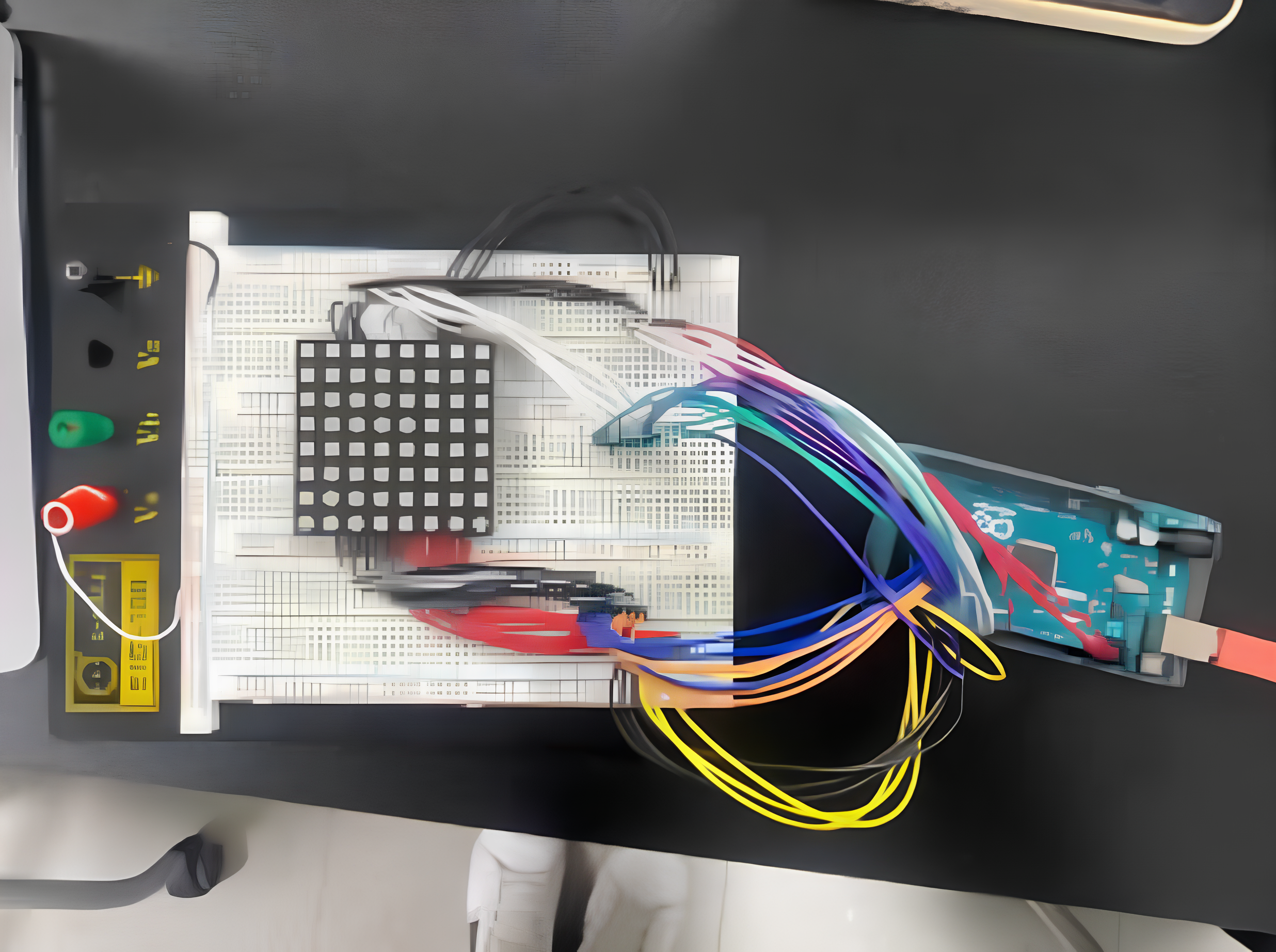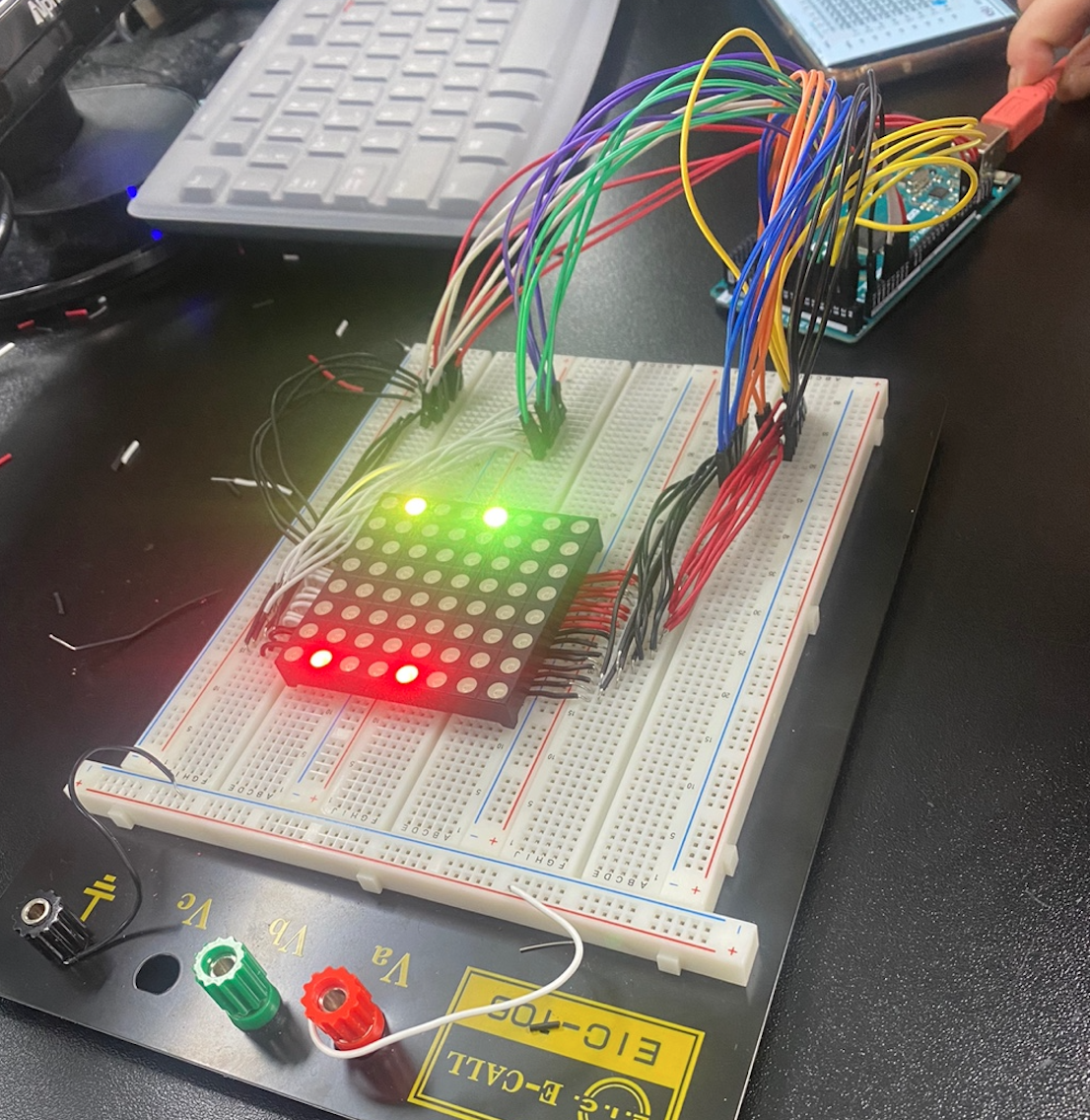Passive Matrix LED Display
This project explored the operation of a Passive Matrix LED (PMLED) system driven by an Arduino. By building the circuit, running diode tests, and programming patterns, we analyzed the relationship between voltage, current, and luminance, and compared PMLED with Active Matrix LED (AMLED) operation.


My role: circuit setup, diode testing, Arduino coding, data collection, and analysis.
-
Method (Brief)
Assembled a PMLED with Arduino, ran diode tests, measured V–I–L relations, and coded custom display patterns.
-
Results
• Threshold voltages differed by color: Vth(R) < Vth(G) < Vth(B).
• Current and luminance both increased proportionally with voltage.
• Custom images were successfully displayed with Arduino-driven PMLED.
• Frame capture illustrated the effects of refresh rate vs frame rate.

-
Outcome & Discussion
The experiment deepened our understanding of PMLED operation and its difference from AMLED, where storage capacitors allow pixel states to persist. We also studied MicroLED as an emerging technology offering superior efficiency and image quality. Coding with Arduino functions (
setup(),loop(),digitalWrite(),for()) strengthened embedded programming skills, while analyzing refresh and frame rates clarified performance factors in display systems.
Project Summary (Short)
Built and tested a PMLED with Arduino, analyzed V–I–L relations, and implemented display patterns. Compared PM vs AM driving methods and explored MicroLED as a next-generation display.